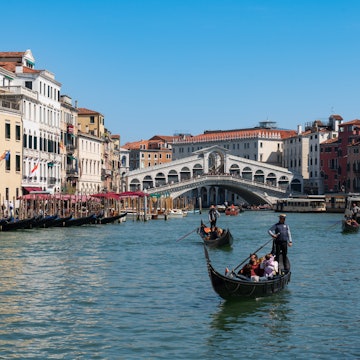
Discover where locals travel in Iceland

The Arctic village of Hrisey, renowned for its breathtaking sunsets, is among the cherished destinations that Icelanders love to visit © Shutterstock / Gestur Gislason
Iceland is a short flight from Europe and the east coast of North America, yet its beauty is so extraordinary— rainbow-capped fjords, black lava fields, glowering volcanoes and glass-clear glacial rivers—it could be on another planet.
While popular and cinematic attractions like the Ring Road, a 830-mile drive around the island’s coastline, the moonlike Reynisfjara beach, and the iconic Blue Lagoon geothermal spa on the Reykjanes Peninsula are worth exploring, Iceland offers even more to those who wish to experience it like a local.
With the toasty warmth of Reykjavik's bars during winter and colorful fishing towns to explore in summer, there is an endless supply of authentic experiences to enjoy. So, if you want to holiday like an Icelander, where should you begin?

Birdlife, hotpots and whale-watching in North Iceland: Hrisey
Carolyn Bain is a guidebook travel author who lives in Reykjavík.
The small island of Hrisey is a 15-minute ferry ride from the North Iceland village of Árkógssandur, but it’s a world away from the hustle of the Ring Road. The ferry doesn’t carry cars; wheelbarrows huddle at the island’s dock so new arrivals can transport their luggage. Parked nearby is a row of tractors, the island's preferred mode of transport.
Some 160 people live here, and there’s not much by way of services: a shop, low-key restaurant, guesthouse, and geothermal swimming pool (this is Iceland, after all!). I come for the tranquillity, the birdlife (ptarmigan, terns, gulls and ducks aplenty), the walking trails, and the views. Hrisey sits in the middle of a long, mountain-lined fjord, with stunning panoramas in all directions.
It's well worth visiting at any time of year. In winter, the ferry continues to operate and the geothermal pools remain open. Plus, the island's beauty is just as captivating. I love visiting in the summer, too. Friends and I will rent a cottage with a private hotpot on the deck (a spa tub, minus the bubbles) and spend hours scouting for whales.
Back on the mainland, the Hrisey ferry docks by Kaldi Brewery in Árkógssandur, which has a restaurant, hotpots and ‘beer baths’. Drive 5km south and you'll reach Hauganes, where Baccalá Bar serves fab fish and chips. Whale-watching boats depart from here and a row of yet more hotpots sits invitingly on the fjord's shore.

Chasing unusual green landscapes in Iceland: Ásbyrgi
Egill Bjarnason is an Icelandic journalist who loves to hike among trees and petrified trolls far away from Reykjavík.
Follow the weather forecast in Iceland for long enough and those double-digit temperatures that hover over Ásbyrgi will eventually draw you in. This lush, horseshoe-shaped canyon is practically one giant sun patio thanks to the 100m-high cliffs that keep out the wind.
Sunny weekend ahead? When they are open between May and October, the campsites in Ásbyrgi are hot property. The North Iceland canyon is one of the furthest drives you can do from Reykjavík, yet scores of families – mine included – will suffer hours behind the wheel to stay here. Foreign tourists? Well, they aren't as passionate about trees and windless nights.
Located inside Vatnajökull National Park, one of Iceland’s most varied national parks, late spring and summer are the best times to visit, especially if you want to hike (some trails close after September). The green landscape here may feel uncharacteristic of rugged Iceland but, rest assured, dormant volcanos and a forceful glacial river share the backyard, along with the Dettifoss waterfall. Hiking the 33km-long Jökulsárhlaup trail takes two days but it's the best trek outside the interior highlands. Short on time? Walk to the Botnstjörn pond at the head of Ásbyrgi for a picnic. Hiking trails to the pond start at the Ásbyrgi car park and take about 30 minutes to walk.

Remote scenery & musical bingo at the edge of the world: Neskaupstaður
James Taylor is a travel writer and photographer based between Barcelona and Reykjavik.
There’s something special about the fringe of rugged fjords in East Iceland. Despite being one of the country's most dramatic and scenic coastlines, most people zip right through. For those who stay, it’s the best place to get your fix of feeling small in a vast and spectacular landscape.
Out of all the beautiful towns here, I find myself drawn back to one of the most isolated: Neskaupstaður. Set at the top end of three distinct fjords, this is as far out as it gets, and the edge-of-the-world scenery is remarkable. I usually set up shop in the campsite above town, but there’s also the family-run Hildibrand Hotel for bedding down. The draw of Neskaupstaður is the chance to immerse yourself in the wild landscapes for a few nights. The hotel organizes kayaking expeditions on the water and super-jeep tours into the mountains, but striking out on your own two feet can be equally as compelling.
East of town there’s a short coastal trail to a cove called Páskahellir (Easter Cave), but for something more hardcore, hike into Hellisfjörður, the next fjord over to the south. You’ll discover the remains of a whaling station, but the trek is the means to a different end: a soul-stirring combination of solitude and scenery. Afterward, revel in the company of the locals with a dinner at the restaurant Beituskúrinn (the Bait Shack), which will hopefully evolve into a raucous party of table-top dancing and singing (if they’re holding their famous musical bingo night).
















